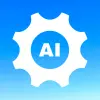RESOURCES
Career Pathways

Career Pathways Systems
Fundamentally, a Career Pathways System is about the coordination of people and resources. Within education, this includes aligning our country's K–12 and postsecondary education systems and, in particular, the career and technical education services provided within and across program providers. This section provides information about career pathways generally and strategies to support career and technical education students in acquiring the academic, employability, and technical skills that employers demand.
Stackable Credentials

Introduction to Stackable Credentials
The approach by community and technical colleges of embedding “stackable” certificates aligned to industry certifications within associate degrees has emerged in recent years as a practical way of helping students progress along the education continuum while earning credentials with labor market value. By organizing programs into a series of certificates that build on each other, colleges can offer incremental milestones on the path to associate degree completion. This resource provides practical steps for enhancing employer engagement, designing programs with stackable credentials, supporting student completion, and sustaining programs responsive to employer needs. Each section offers resources, tools, and promising practices.

Mapping Upward: Stackable Credentials That Lead to Careers
The Mapping Upward project provides technical assistance to community college networks as their member colleges work to embed stackable, industry-recognized credentials within technical associate degree programs.
Employer Engagement

Business and Industry Leadership Teams
The Business & Industry Leadership Team (BILT) model is a proven method for strategic employer engagement developed by the National Convergence Technology Center. The frequency, specificity, and depth of business input, coupled with an industry-led governance structure, sets the BILT model apart. BILTs embrace the notion that employer engagement is not an event, but a process built on trusted relationships between colleges and companies. BILTs leverage the sector knowledge of employers and teaching expertise of faculty to foster powerful collaborations that ensure program curriculum meets the needs of business and students are workforce ready.

Implementing the BILT Model of Business Engagement: A Guide for Strengthening Industry Commitment for Technical Programs
This document provides a guide for implementing the Business & Industry Leadership Team (BILT) model to enhance industry commitment to technical programs in community and technical colleges. It highlights the limitations of traditional business advisory committee meetings and emphasizes the need for a more engaged, business-led approach to align program graduates with industry needs. The BILT model involves businesses in a co-leadership role, allowing them to provide direct input into the knowledge, skills, and abilities (KSAs) that program graduates should possess.

Common Barriers to Successfully Engaging Employers—and How to Overcome Them
The National Convergence Technology Center (CTC), funded by a National Science Foundation grant, has developed a set of best practices that energizes traditional business advisory councils through frequent, structured engagement that encourages employers to co-lead technical programs. This model (BILT—Business and Industry Leadership Team) has been adopted nationwide by many programs, including entire colleges. The goal is to strengthen employer relationships, get curriculum aligned to workforce needs, and ensure graduates are workforce ready. This session, presented at the High Impact Technology Exchange Conference in 2021, covers BILT basics and presents ways to overcome implementation challenges.

Employer Strategies for Managing Successful Employer Councils
In this article from Pathway Perspectives, the online journal of the National Career Pathways Network, authors Ann Beheler and Mark Dempsey describe the advantages of the Business and Industry Leadership Team (BILT) model over traditional business advisory councils. "Think of the BILT as a business advisory council on steroids," the article states, "whereby employers are co-leading the program and ensuring curriculum delivers the skills they need in new hires 12–36 months into the future. The BILT model is flexible and scalable. It can work on a single program, an entire college, or a regional group—and for any technical discipline."

Adopting a Career Pathways Framework That Supports and Sustains Innovation
This presentation at NCPN CONNECT 2023 highlighted best practices centered around three focus areas: Strategic employer engagement, designing career pathways with stackable credentials, and supporting student completion. The presenters shared the experiences of five national cohorts along with tools and resources that can deployed with K-16, community, and employer partners. Hope Cotner, President/CEO, CORD; Debbie Davidson, Director of Technical Assistance, CORD
Apprenticeship

Apprenticeships in Career Pathways
In this article from Pathway Perspectives, the online journal of the National Career Pathways Network, author Jennifer Jirous-Rapp, PhD, describes apprenticeships as strategies that aim to help workers acquire the skills and credentials they need to succeed in our fast-paced evolving labor market, both models offer learners the opportunity to earn industry-recognized credentials, increase their employability skills, and advance in their chosen fields. By connecting these models, educators can create and make accessible more opportunities for all learners to advance in their education and careers, while meeting the needs of employers and the economy.

Registered Apprenticeship Program
Published by the U.S. government (apprenticeship.gov), this page provides definitions; identifies key elements, benefits, and incentives to employers; explains core building blocks; and identifies industries that are adopting and adapting apprenticeship.

Adopting a Career Pathways Framework That Supports and Sustains Innovation
This presentation at NCPN CONNECT 2023 highlighted best practices centered around three focus areas: Strategic employer engagement, designing career pathways with stackable credentials, and supporting student completion. The presenters shared the experiences of five national cohorts along with tools and resources that can deployed with K-16, community, and employer partners. Hope Cotner, President/CEO, CORD; Debbie Davidson, Director of Technical Assistance, CORD
Miscellaneous

Glossary of Terms Pertaining to Career Pathways, Career and Technical Education, Stackable Credentials, and Related Educational Approaches
Provides concise definitions for terms such as apprenticeship-related instruction (ARI), bridge programs, career and technical education (CTE), career pathway, competency-based education, prior learning assessment, and more. Excerpted from Introduction to Stackable Credentials (prepared January 2021 by the Center for Occupational Research and Development in partnership with Social Policy Research Associates for the Stackable Credentials Expansion and Dissemination Initiative, U.S. Department of Education, Office of Career, Technical, and Adult Education)

Career and Technical Education: A Primer
This report provides an overview of CTE, beginning with discussion of the history of federal support, CTE as defined at the secondary and postsecondary levels, and the most recent enrollment and completion data. The second half discusses challenges with CTE program implementation and access, strategies and resources that have been used to address these challenges, and outcomes associated with participating in and completing CTE programs of study. The Appendix provides additional information on the specifics of career clusters and career pathways referenced throughout the report. (Congressional Research Service R47166)

A Look at Partnerships Between Employers and Community and Technical Colleges
Based on a study that collected and analyzed data regarding employers’ engagement in career-technical programs at community and technical colleges. The study asked the following questions: (1) What are the motivating factors and perceived benefits for employers to initially engage with the career-technical programs of their local community/technical colleges? (2) What benefits have employers realized from their engagement with the career-technical programs of their local community/technical colleges? (3) What factors can contribute to sustained employer engagement in career-technical programs? (4) What relationship, if any, exists between a community or technical college’s ability to effectively design, implement, and sustain training programs that meet a community’s workforce development needs and the frequency, depth, and quality of the interactions and resulting relationships with local employers? (Conducted by the Center for Occupational Research and Development [CORD] in partnership with Social Policy Research [SPR] Associates with support from the ECMC Foundation)
Artificial Intelligence

Artificial Intelligence and the Future of Teaching and Learning
This report by the U.S. Department of Education’s Office of Educational Technology addresses the need for sharing knowledge and developing policies pertaining to artificial intelligence (AI), a rapidly advancing class of capabilities that are increasingly embedded in educational technology systems and are available to the public. The report considers technologies designed for educational use and general technologies that are widely used in educational settings, and provides recommendations for teachers, educational leaders, policymakers, researchers, and educational technology innovators and providers.

Generative AI in Schools: Evolving Coursework, Homework and Assessment in the Age of AI
This report by Goodnotes features contributions, reflections, and ideas from over 50 contributors, each offering a unique perspective on the challenges, trends, barriers, and solutions related to GenAI in school communities around the world. The report serves as a call to "reimagine teaching and learning practices and encourages readers to disseminate and apply their knowledge, skills, and experience in a sector-wide approach."

Bringing AI to School: Tips for School Leaders
Publihed by the International Society for Technology in Education (ISTE). "Artificial Intelligence is having a major impact on education. Whether you are excited or concerned about AI, as a school leader you have a responsibility to ensure AI is approached thoughtfully and appropriately in your school community and informs your vision for teaching and learning. This guide will help you quickly gain the background you need as a learning leader in an AI infused world. "

OECD.AI Policy Observatory: Policies, Data, and Analysis for Trustworthy Artificial Intelligence
The OECD AI Policy Observatory (OECD.AI) combines resources from across the OECD and its partners from all stakeholder groups. It facilitates dialogue and provides multidisciplinary, evidence-based policy analysis and data on AI’s areas of impact. It is a unique source of real-time information, analysis and dialogue designed to shape and share AI policies across the globe.

Blueprint for an AI Bill of Rights
To advance President Biden’s vision, the White House Office of Science and Technology Policy has identified five principles that should guide the design, use, and deployment of automated systems to protect the American public in the age of artificial intelligence. The Blueprint for an AI Bill of Rights is a guide for a society that protects all people from these threats—and uses technologies in ways that reinforce our highest values.

Generative Artificial Intelligence for Education and Pedagogy
While generative artificial intelligence (GAI) has the potential to customize the learning experience and could increase accessibility, it poses risks. To address the risks of GAI while maximizing its benefit, the authors propose a flexible framework in which instructors can choose (1) to prohibit, (2) to allow with attribution, or (3) to encourage GAI use. The proposed framework takes into consideration academic integrity, accessibility, and privacy concerns and makes recommendations for faculty and administrators.

Final Report of the Commission Expert Group on Artificial Intelligence and Data in Education and Training: Executive Summary
This report presents the efforts of the Expert Group on Artificial intelligence (AI) and Data in Education and Training, to inform the EU Commission on the current interplay among AI, data and their ethical use in education and consolidate the conceptual work of the Expert Group to provide an ethically sound and justified background for the development of the ethical guideline

AI Policy Guidance for Schools
Designed to help education authorities, school leaders, teachers, and others create thoughtful guidance to help their communities realize the potential benefits of incorporating artificial intelligence (AI) in education while understanding and mitigating the potential risks.

AI Guidance for Schools Toolkit
Developed by teachai.org, the toolkit covers seven principles: purpose, knowledge, integrity, evaluation, compliance, balance, and agency. For each principle, the guide provides questions to discuss and consider and real-world examples.

